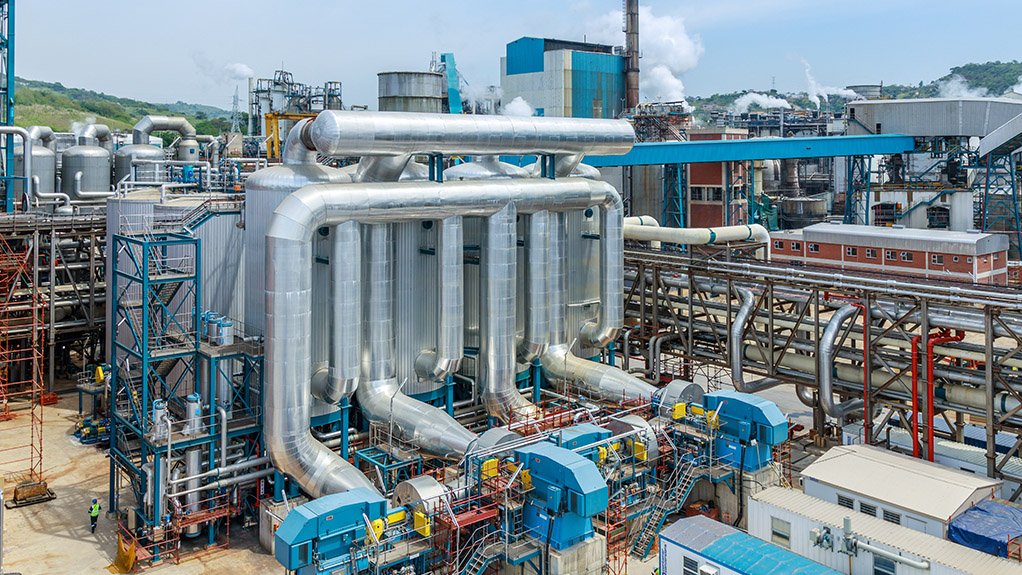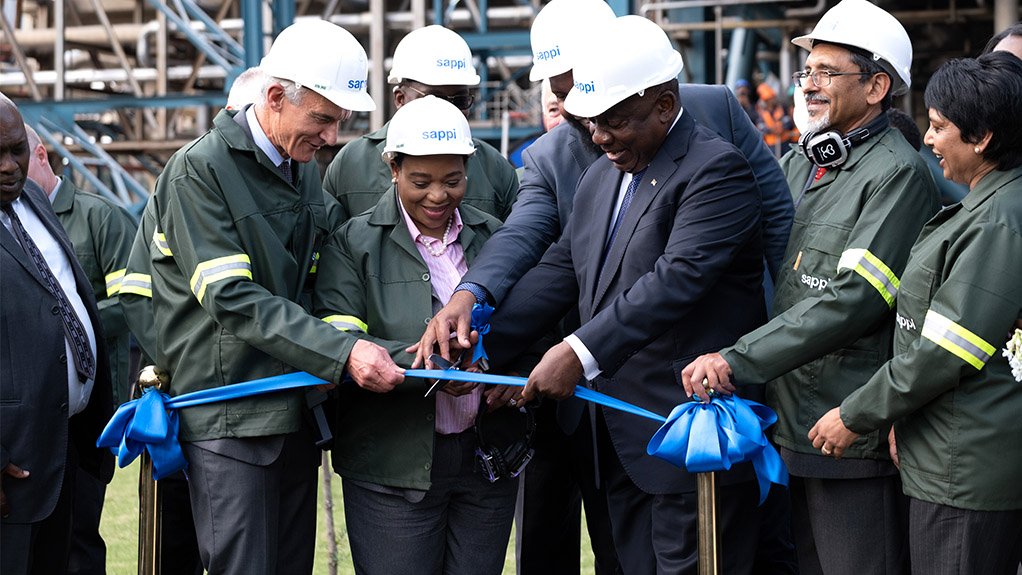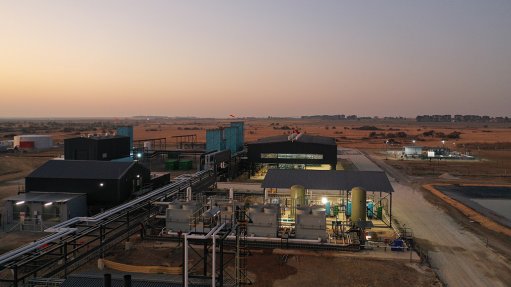Sappi shows off its Saiccor mill after latest R7.7bn upgrade
A R7.7-billion expansion and environmental upgrade project at paper and pulp company Sappi’s Saiccor mill was officially opened by President Cyril Ramaphosa, on September 13 in Umkomaas, KwaZulu-Natal.
Sappi said the project – which was first announced at the 2018 Presidential Investment Conference – was in response to Ramaphosa’s call for investment into the South African economy.
The President was joined in the ceremonial ribbon-cutting ceremony by a delegation of representatives, including Trade, Industry and Competition Minister Ebrahim Patel, KwaZulu-Natal Premier Nomusa Dube-Ncube and Economic Development, Tourism and Environmental Affairs MEC Siboniso Duma.
They were joined by Sappi chairperson Sir Nigel Rudd, Sappi CEO Steve Binnie and Sappi Southern Africa CEO Alex Thiel.
The expansion and upgrades included a new evaporator, recovery boiler, screening and washing plant, as well as upgrades to the bleach plant and pulp machines, improved recovery circuits and additional magnesium digesters.
New technology employed incorporates improved washing technology to improve water and energy efficiency, better cooking technology for improved pulp quality control, the application of robotics to facilitate debottlenecking, as well as shop-floor digitisation for improved commissioning, control and operational efficiency.
Upgrades to the woodyard were carried out as well to enable smooth logistics supply chain operations. This included the installation of offloading equipment, side-arm rail carriage chargers and new chipper lines.
The expansion also resulted in the installation of the world’s largest sulphite recovery boiler, with the capacity to process up to 1 500 t/d of dry solids.
Additionally, 110 km of cabling was installed, along with 56 km of piping.
More than 2 000 trucks of concrete were used, amounting to about 30 000 t, as well as half the amount of steel that went into building the Eiffel Tower.
Notably, the pipe bridge modularisation was a first for Sappi Southern Africa, which the company believed to be the largest of its kind in South Africa.
“The board believes the South African forestry industry is globally competitive and can make further substantial contributions to the South African economy. This investment reflects our confidence in our South African operations,” Rudd said.
Binnie noted that the reason for Sappi’s investment in dissolving pulp was that global demand continued to grow for renewable textiles derived from sustainable wood fibre.
Fabrics made from cellulose differ from other feedstock fibres in that they are breathable, absorbent, recyclable and biodegradable. Woodfibre provides a sustainable alternative to other feedstocks.
“Sappi supplies over 50% of the world’s Lyocell demand, the next-generation textile material made from cellulosic fibres. This expansion project not only meets customer demand for greater dissolving pulp production – and in particular Lyocell – but also significantly reduces the mill’s environmental footprint and supports Sappi’s decarbonisation journey, while also generating an additional R1-billion a year in direct benefit to the KwaZulu-Natal economy,” he explained.
Binnie commended the Sappi role-players who had conceptualised the project and brought it to fruition, despite difficult conditions and interruptions resulting from Covid-19 restrictions.
“By using renewable and sustainably sourced wood to produce circular, innovative biobased products, Sappi [is] reducing and replacing the need for fossil-based products,” he said.
The Saiccor mill was acquired by Sappi in 1989 and extended its global reach into the international dissolving pulp markets. Since then, the mill has undergone three expansion projects to keep pace with global demand.
Branded as ‘Verve’, almost all of the dissolving pulp produced at the mill is sold globally into the viscose staple fibres markets for use in textiles and clothing for various brands.
The project will help Sappi achieve its target of reducing its greenhouse-gas emissions by 18% by 2025.
“The installation of the largest sulphite recovery boiler in the world and the conversion of the calcium cooking line to the more sustainable magnesium bisulphite technology reduces the need for coal-based power generation at the mill, leading to a significant reduction in fossil fuel energy requirements and increasing the mill’s renewable energy use, additionally realising considerable variable cost savings,” Thiel said.
Article Enquiry
Email Article
Save Article
Feedback
To advertise email advertising@creamermedia.co.za or click here
Comments
Press Office
Announcements
What's On
Subscribe to improve your user experience...
Option 1 (equivalent of R125 a month):
Receive a weekly copy of Creamer Media's Engineering News & Mining Weekly magazine
(print copy for those in South Africa and e-magazine for those outside of South Africa)
Receive daily email newsletters
Access to full search results
Access archive of magazine back copies
Access to Projects in Progress
Access to ONE Research Report of your choice in PDF format
Option 2 (equivalent of R375 a month):
All benefits from Option 1
PLUS
Access to Creamer Media's Research Channel Africa for ALL Research Reports, in PDF format, on various industrial and mining sectors
including Electricity; Water; Energy Transition; Hydrogen; Roads, Rail and Ports; Coal; Gold; Platinum; Battery Metals; etc.
Already a subscriber?
Forgotten your password?
Receive weekly copy of Creamer Media's Engineering News & Mining Weekly magazine (print copy for those in South Africa and e-magazine for those outside of South Africa)
➕
Recieve daily email newsletters
➕
Access to full search results
➕
Access archive of magazine back copies
➕
Access to Projects in Progress
➕
Access to ONE Research Report of your choice in PDF format
RESEARCH CHANNEL AFRICA
R4500 (equivalent of R375 a month)
SUBSCRIBEAll benefits from Option 1
➕
Access to Creamer Media's Research Channel Africa for ALL Research Reports on various industrial and mining sectors, in PDF format, including on:
Electricity
➕
Water
➕
Energy Transition
➕
Hydrogen
➕
Roads, Rail and Ports
➕
Coal
➕
Gold
➕
Platinum
➕
Battery Metals
➕
etc.
Receive all benefits from Option 1 or Option 2 delivered to numerous people at your company
➕
Multiple User names and Passwords for simultaneous log-ins
➕
Intranet integration access to all in your organisation





















